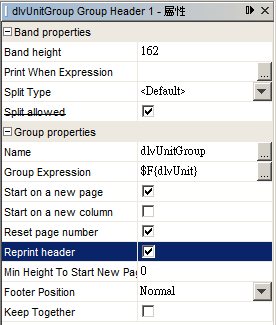Total Pageviews
2012/04/16
10 project management lessons from the Titanic disaster
1: You need to know what you’re measuring
Frederick Brook says, milestones should be objectively measurable. If you do not have valid measurements for your project, you will run into problems.
2: Assumptions can kill you
Maybe we assumed that a particular system was using a newer software release than it actually was.
Maybe we assumed that another department would take care of ordering cable.
Maybe we assumed that the vendor received our critical email message.
Assumptions are important in your work, but if you proceed on the basis of them, make sure everyone is clear about what assumptions you are making.
3: Distractions are dangerous
If enough members of your team encounter enough distractions, your project will gradually fall behind.
4: Little things add up
The small delays are just as critical as the large ones, meaning that adherence to milestones is critical to the success of a project.
5: Stakeholders should be kept informed
Our stakeholders need to know about the status and progress of your project. Keeping them informed will keep them happier.
6: Other people’s perspectives matter
If a client asks a question, try to see beyond the question itself to the motivation behind the question.
If a technical person is explaining a function of a system or program, make sure the explanation avoids jargon.
Clear communication will lead to happier clients.
7: Moving targets can hurt you
Any change is rarely “small.” Rather, it typically involves changes to other parts of a system, results in greater complexity, and requires more testing.
8: Traceability is essential
How familiar are you with the strategic objectives of your company?
Can you find a logical connection between the requirements of your project and those strategic objectives?
9: Methodology is more important than technology
You might want to use sophisticated planning and tracking software and tools.
More important, though, is that your plan be solid.
The best software in the world will not save a poorly designed plan.
10: Documentation may have lasting benefits
Documentation is often the most important part of the project because it may exist long after the project team has disbanded.
http://www.techrepublic.com/blog/10things/10-project-management-lessons-from-the-titanic-disaster/3174
Labels:
網路文章
2012/04/13
Becoming A Better Developer
- Motivation
- If you’re not growing, you’re dying…
- Confidence
- Good developers are usually quite confident in their abilities. Why? Because they know that they have put in the effort to truly understand what they are talking about. Be confident in what you know.
- Choose Concepts Over Implementations
- If you understand the concepts, that enables two things.
- First, you can use those concepts in other languages with ease. But far more importantly it lets you think abstractly about different ways to solve a problem.
- It also lets you learn from other communities. So rather than waiting for somebody else to solve a problem in your language, or looking for help in your language, you can look anywhere for help.
- Read At Least One Book per Week (well~it's very difficult for me >_<)
- There are two main things that you’ll benefit from with this approach.
- First, by reading actual books, you’ll focus on exploring a concept in depth.
- The second advantage to the one-book-per-week approach is that it will make you push your boundaries.
- Share Your Knowledge
- The best way to learn is to teach.
- Become a Mentor
- The important thing is to look at the mistakes they are making and help them to understand why they are making the mistake. The obvious benefit here is that you are “paying back” the community and investing in the future of the industry.
For complete information : http://blog.ircmaxell.com/2011/11/becoming-better-developer.html
Labels:
網路文章
2012/04/12
Apache Commons應用 - CollectionUtils
Requirement
報表輸出結果,應該依序輸出「營業事業所得稅」、「綜合所得稅」、「遺產稅」、「贈與稅」、「貨物稅」、「菸酒稅」、「證券交易稅」、「期貨交易稅」、「營業稅」、「特銷稅」。如果沒有資料,該稅別要顯示出來,數字要顯示0。結果如下,
根據user requirement要求的輸出結果,並不是按照tax code或者tax name的筆劃順序進行排序,此部份必須要根據query回來的的結果來做加工。
Problem
原本的作法是用SQL將統計資訊算出來,但是其只會傳回有存在的資料,若沒有符合條件,就不會回傳資料,故只有回傳兩筆資料。
從SQL回傳回來的結果會是一個List of value object,以目前的條件,只會有兩個value object,分別是「營利事業所得稅」與「期貨交易稅」。
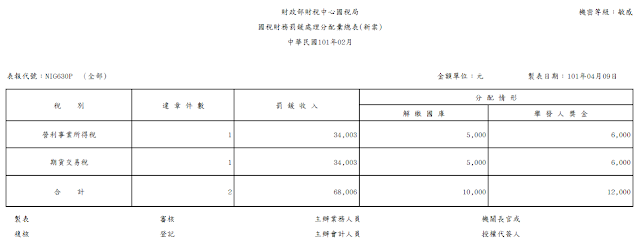
Solution
由於資料固定只有10筆,放在SQL裡頭做的話,SQL會很複雜,日後維護不易,故此部份的資料加工放在AP端進行處理。
- 建立一個新的List物件, List result = new ArrayList();
- 根據回傳回來的list of value object來進行判斷
- List中是否有「營業事業所得稅」的資料
- 若「有」,從List中找出該object,並add到新的List物件
- 若「無」,add一筆空的資料到新的List物件
- List中是否有「 綜合所得稅 」的資料
- 若「有」,從List中找出該object,並add到新的List物件
- 若「無」,add一筆空的資料到新的List物件
- List中是否有「 遺產稅 」的資料
- 若「有」,從List中找出該object,並add到新的List物件
- 若「無」,add一筆空的資料到新的List物件
- 「 贈與稅 」、「 貨物稅 」、「 菸酒稅 」、「 證券交易稅 」、「 期貨交易稅 」、「 營業稅 」、「 特銷稅 」依此類推
Apache Commons有提供CollectionsUtils此API,其提供不少utility method來針對Collection物件進行一些處理,根據以上需求有兩個:
- 從List中check是否有存在特定的object
- 從List中取得特定的object
//List中是否有「營業事業所得稅」的資料
1: private static boolean is35Exist(List list) {
2: return CollectionUtils.exists(list, new Predicate() {
3: @Override
4: public boolean evaluate(Object obj) {
5: NIG630ReportBean bean = (NIG630ReportBean) obj;
6: return "營利事業所得稅".equals(bean.getTaxNm());
7: }
8: });
9: }
//從List中找出該object
1: private static NIG630ReportBean find35(List list){
2: return (NIG630ReportBean) CollectionUtils.find(list, new Predicate() {
3: @Override
4: public boolean evaluate(Object obj) {
5: NIG630ReportBean bean = (NIG630ReportBean) obj;
6: return "營利事業所得稅".equals(bean.getTaxNm());
7: }
8: });
9: }
Labels:
Tools
Stop Redeploying in iReport Development
Context
以下是本案的project structure:
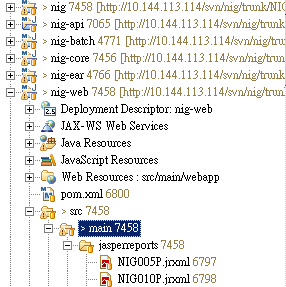
所有的jrxml放在jasperreports folder中,當jrxml有異動,處理程序如下:
1. 執行maven build
2. 將jrxml compile成jasper file會搬到nig-web\src\main\webapp\WEB-INF\classes\META-INF\jasperreport
3. 包成ear file
4. deploy到application server
Problem
在用iReport開發的時候,最浪費時間的部份,就是在我們無論做任何的細微的修改,如果要看到修改後的結果,都要將jrxml compile成jasper,然後redeploy到application server,此過程曠日廢時,浪費許多寶貴的開發時間。
Solution
Step2. iReport--> Compilation and execution--> unchecked "Use Report Directory to compile"-->將「nig-web\src\main\webapp\WEB-INF\classes\META-INF\jasperreports」貼進 "Compilation directory"-->click 「確定」按鈕
以下是本案的project structure:

所有的jrxml放在jasperreports folder中,當jrxml有異動,處理程序如下:
1. 執行maven build
2. 將jrxml compile成jasper file會搬到nig-web\src\main\webapp\WEB-INF\classes\META-INF\jasperreport
3. 包成ear file
4. deploy到application server
在用iReport開發的時候,最浪費時間的部份,就是在我們無論做任何的細微的修改,如果要看到修改後的結果,都要將jrxml compile成jasper,然後redeploy到application server,此過程曠日廢時,浪費許多寶貴的開發時間。
Solution
Step1. 打開iReport工具-->工具--選項
Step2. iReport--> Compilation and execution--> unchecked "Use Report Directory to compile"-->將「nig-web\src\main\webapp\WEB-INF\classes\META-INF\jasperreports」貼進 "Compilation directory"-->click 「確定」按鈕
設定完成後,當我們在iReport Designer做任何異動,click "Compile Report" button,iReport會自動將jasper file搬移到指定目錄,application server會自動抓到最新的jasper file,不用再rebuild and redeploy了。
Labels:
iReport
iReport print when expression 應用
Requirement
在報表呈現的內容,每筆資料之間,需要有間隔的虛線如下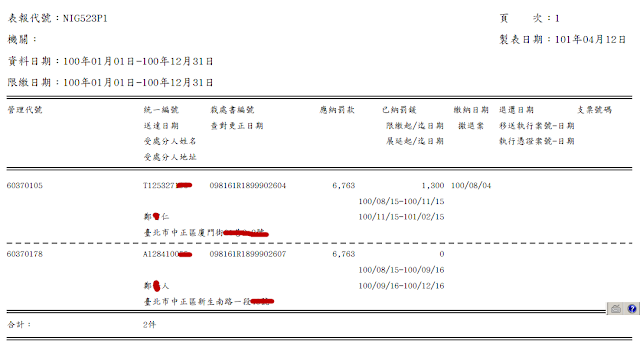
Problem
原本iReport designer中的作法,是將line放在detail band中的fields下方,screenshot如下:
但是此舉,在最後一筆資料,也會出現分隔線,此結果不合理。
Solution
step1. 將分隔線放到detail band的fields上方,如此一來,列印順序是line-->data-->line-->date-->line-->data,以此類推
step2. 由於列印順序是line-->data-->line-->data-->line-->data,為了滿足需求,只要讓第一次出現line的時候,不要讓顯示出來就好。此時,click line,並在attribute視窗中的print when expression輸入條件,當是第一筆的時候,不要印出line,從第二筆資料開始即可。
在報表呈現的內容,每筆資料之間,需要有間隔的虛線如下

Problem
原本iReport designer中的作法,是將line放在detail band中的fields下方,screenshot如下:
但是此舉,在最後一筆資料,也會出現分隔線,此結果不合理。
Solution
step1. 將分隔線放到detail band的fields上方,如此一來,列印順序是line-->data-->line-->date-->line-->data,以此類推
Labels:
iReport
2012/04/08
Project Manager and Subject Matter Expert
對於project manager這個角色,到底需不需要有技術能力,一直是常在爭論的議題。
這篇文章倒是給了一個不錯的答案:『有會更好』
他提到了,如果是technical project manager可以帶來幾個好處
- 遇到問題的時候,他更能掌握問題的難度,更能掌握要花多少時間來解決這個問題,對於時程的掌握會更踏實
- 你對於你的團隊更有同理心,因為你知道問題的難度。project manager總是想急著解決問題,常會脫口而出:『這個問題有這麼難嗎?有需要這麼久嗎?』
- 由於你有技術的底子,對於某些問題,若有過往的經驗,可以更快找出解決方案,並帶了團隊走向正確的方向,避免花額外的時間去做trial and error
以下是摘錄全文中的部分:
- Scope and Schedule – If you have a background in the project you are managing it becomes much easier to understand what the project is trying to accomplish. This helps you in defining the scope of the project and setting the schedule. You will know roughly how long it takes to build a server, install a circuit, or design a network.
- Empathy – If you understand the work, it makes it much easier to empathize with the team. I have built some strong relationships with the network engineers I work with, because they think of me as one of them and not just another project manager. A project manager should never under estimate the value of relationships.
- Misinformation and Solutions – You will have a much better sense of when you are getting the wrong information and be able to contribute to solutions.
- Ramp Up – Most projects start life underfunded and behind schedule. It is an unfortunate fact of life for project managers. If you know the subject matter, you will spend more time focused on the project than trying to understand it. This will save you significant precise time.
全文請看:http://www.cerebellumstrategies.com/project-manager-expert/
Labels:
網路文章
2012/04/04
5 Reasons Why Software Quality Matters to your Business
Predictability
Do it once and do it right, and there will be less re-work, less variation in productivity and better performance overall.
Reputation
Some companies have a reputation for building quality software.
A good, solid reputation is hard to establish and easy to lose, but when your company has it, it’s a powerful business driver.
Employee Morale
The most productive and happy employees have pride in their work. Enabling employees to build quality software will drive a much higher level of morale and productivity.
Customer Satisfaction
A quality product satisfies the customer. A satisfied customer comes back for more and provides positive referrals.
Bottom Line
Predictable and productive performance, a stellar reputation, happy employees, and satisfied customers are the formula for a successful software business.
http://blog.smartbear.com/post/12-04-03/5-reasons-why-software-quality-matters-to-your-business/
Labels:
網路文章
12 Ways to Become a Better Programmer
1. Read Other People’s Code
Reading other people’s code will allow you to understand different points of view in problem solving as well as introduce you to new techniques. It is important to have an objective to your reading, such as learning a new programming paradigm or how to work with a new API.
2. Develop Personal Motivation
Being motivated to become better at your chosen profession is an excellent step in the right direction.
3. Get a Mentor
This should be a person that you aspire to be like professionally, that has a background that you can relate to and that you have a lot to learn from.
4. Learn to Listen
Learn to listen to what the customer has to say, listen to your coworkers when they are discussing the project. Don’t assume that what you think is really what they want.
5. Gain Confidence
Why are good programmers so confident? They know they have put in the time and effort necessary to truly understand what they are talking about. This knowledge enables them to make the best decisions and be able to discuss or defend them in a productive way when needed.
6. Join a User Group
hese groups are usually structured around two concepts: teaching and networking. Not only will you be able to learn something new at each monthly presentation but you will gain valuable contacts in your industry that could later lead to internships, jobs or mentors.
7. Read at Least Two Books a Month
By reading books you will be focusing and exploring a concept in depth as opposed to “grazing” on information such as blogs, tweets and other online reading that rarely goes in-depth on a topic. This way, you will be better able to take these lessons and concepts and apply them to the real world.
8. Learn to Use Your Debugger
For some programmers, finding bugs means you did not spend enough time planning or that you have been sloppy during your code writing. Errors in your code should not be taken personally. Humans will continue to make mistakes and that is something we have to accept. Stop looking at your debugger as an evil you need to avoid and see it as a tool you can use to create better code.
9. Never Stop Learning
Over the years the continuous pattern of framework upgrades, version numbers and release dates start to run together but you must keep your skills up to date by evaluating new technology and trends as they are happening.
10. Share Your Knowledge
The best way to learn something is to teach it to someone else.
11. Learn Keyboard Shortcuts
For programmer this means knowing how to type quickly and accurately as well as know your way around keyboard shortcuts that will make you a faster developer.
12. Learn When to Take a Break
When working on a task such as programming that requires concentration, you will often find that you are making more mistakes or creating more problems when you are tired. Stopping programming is often a better solution when tired than having to fix the mess you made.
http://www.learncomputer.com/12-ways-to-become-better-programmer/
Labels:
網路文章
2012/03/31
6 things they didn't teach me at the academy - Prepare yourself better for a developer's life
Looking for your first position in the software world?
Want to know more about developer's life?
Here present you with 6 essential points that will help you in your upcoming venture:
Want to know more about developer's life?
Here present you with 6 essential points that will help you in your upcoming venture:
- Understanding the structure of a software company: in most cases there will be a distinction between Developers, QA's/Testers, Support, Product and IT. Understanding this structure beforehand will help a candidate understand the job description he is interviewing for.
- Development Methodologies: Waterfall or Scrum, Agile or not,
- Code Management tools and processes: code repository tools, Continuous Build , Integration Test, Issue tracking systems
- Coding guidelines.
- IDE usage.
- Utilizing the power of open source.
Labels:
網路文章
2012/03/28
6 Tips to Stay Focused on Project Deadlines
1. Be a perfectionist
If you always look for that perfect design (nothing wrong with this, by the way) you will find yourself spending more time analyzing then actually finishing the project. This needs to be worked out, as the client expects you to finish your work on time.
2. Pre-defined time for each task
A solid plan means working on a specific task one at a time. This will ensure you stay fully focused on the one task you have to do and therefore finish earlier or at least in time.
3. Have a daily plan
Having a daily plan is good for your confidence. Keeping a close eye on every phase of a project will likely make you feel better at the end of each day. If you manage to do something every day (and keep track of it) you will feel accomplished more often.
4. Work breakdown structure (WBS)
Having a to-do list might work well for small projects, but once you start working on a larger scale, small lists might not be so effective.
If you have lists with large, complicated activities, checking them off at the end of the day is not likely to happen, therefore you need to break the work down into smaller bits. Having sub-lists with smaller tasks will be more rewarding for you at the end of the day.
5. Larger scale management
Besides the small to-do lists and the WBS you do quite often, having a detailed monthly schedule is also recommended. Planning in advance can’t go wrong when you think of it very well.
6. Reward yourself
It makes you look forward to reaching your goals and to the next week.
" it is impossible to be good at maintaining your schedule if you are not organized."
Reference : http://www.1stwebdesigner.com/design/tips-to-stay-focused-project-deadlines/
Labels:
Project Management
2012/03/21
WebSphere Application Server Performance Tuning Toolkit
IBM has released the WebSphere Application Server Performance Tuning Toolkit that gives the ability to monitor multiple WebSphere Application Servers from an eclipse workspace*.
This tools uses WAS Performance Monitoring statistics to get and chart statistics that indicate the health and well being of your server.
* Please note that the tool has been released on an as-is basis with no support.
Read more: http://www.javacodegeeks.com/2012/03/websphere-application-server.html#ixzz1plNsrVKx
This tools uses WAS Performance Monitoring statistics to get and chart statistics that indicate the health and well being of your server.
* Please note that the tool has been released on an as-is basis with no support.
Read more: http://www.javacodegeeks.com/2012/03/websphere-application-server.html#ixzz1plNsrVKx
Labels:
WebSphere
iReport : Reprint header
Problem
When I export my report to pdf format, the data split into multiple pages.
The report header should print for each page, but it only print once.
Root Cause
Here has one group options to do reprint
- Reprint header : If you want to reprint the group header on each page, check this option.
Step by step
Labels:
iReport
2012/03/08
高績效主管的8堂必修課
- 發掘部屬強項 : 了解部屬的優點,才能適才適所、將對的人放在正確的位置上,以發揮更大的生產效能
- 與部屬分享資訊 : 了解公司的使命、清楚該為何而戰
- 傾聽部屬心聲 : 唯有放下成見,願意閉上嘴巴、聆聽部屬心聲,主管才能對員工產生影響力,創造更大的績效
- 保護部屬 : 執行任務的過程中,如果遇上任何阻礙,主管都必須在第一時間跳出來排解,或者適時爭取部屬應得的權益
- 清楚設定目標 : 設定目標也能預防雙方對「該做的事」認知不一致,創造有效率的生產行為
- 讚美部屬 : 在部屬照著原先設定的目標努力,並達到所謂的「好的結果」時,主管就要立刻給予回饋,使部屬了解自己做對了,往後也能擁有更好的動能,繼續努力做出對的事
- 斥責部屬 : 針對事件、不牽涉人格的指正,它必須在部屬犯錯的當下執行,讓他知道這是嚴重的錯誤,才能有效預防再犯
- 授權與賦權部屬 : 主管的任務在於提升團隊的總產出,因此,主管更需要授權,才能擁有充分的時間,拓展新業務、協助部屬成長,讓團隊產出繼續增值
http://www.managertoday.com.tw/?p=11328
15 Tenets For The Software Engineer
- Remember the basics : If you forget the basics of a programming language, you lose your foundational knowledge.
- Always assume the worst case.
- Test your code.
- Do not employ new technologies because they are new, use them because they solve a problem : Utility is the key, not coolness.
- Read, a lot.
- Try new techniques and technologies, a lot.
- Fail, you will learn something.
- Ship the damn software : Sometimes you just need to get the job done, but you must be aware of technical debt. If you continuously just ship software without removing technical debt, you are well on your way to creating a nightmare when a major production issue arises.
- Do it the “right way”.
- Leave the code better than how you found it.
- Think about concurrent access.
- Storage may be free, but I/O sucks.
- Memory does not go as far as you may think.
- Caching fixes everything until it crashes the server.
- Think like a consultant : As an employee, you need to use your power to state that the deadline can not move due to the amount of work required, or that scope cannot be increased without increasing the number of resources. Consultants tend to be allowed to manage a project differently than employees, and it is our job to change that.
Get further information:
Labels:
網路文章
Autotab: jQuery auto-tabbing and filter plugin
Requirement
We have five input text fields in this page.- As we filled in 3 characters in dlv_unit(移送單位), system should automatically set focus to tax_cd(稅別).
- As we filled in 2 characters in tax_cd(稅別) , system should automatically set focus to dlv_yr(移送年度).
- As we filled in 3 characters in dlv_yr(移送年度) , system should automatically set focus to flg_tp(申報年度).
- As we filled in 1 characters in flg_tp(申報年度), system should automatically set focus to serial_no(流水號).

Introduction
Autotab is a jQuery plugin that provides auto-tabbing and filtering on text fields in a form. Once the maximum number of characters has been reached within a defined text fields, the focus is automatically set to the defined target of the element.Download
jQuery Autotab Plugin v1.1b (1867021)Basic Usage
1. Include jquery.autotab.js in your HTML:2. Add your text fields in your HTML, including an ID:
3. Initialize Autotab on your text fields with a ready() handler:
Labels:
jQuery
iReport : text alignment
Requirement
Utilize JasperReports to print name and adrress on envelope. Name and addess should print from top to down.
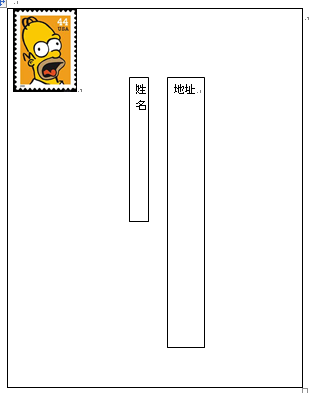
Concerning text alignment, iReport has three attributes:
Examples of combining horizontal alignment, vertical alignment and rotation in a element.
The resulting paragraph will be horizontally aligned left, vertically aligned top, and the text will flow from top to bottom.

Running this sample

Utilize JasperReports to print name and adrress on envelope. Name and addess should print from top to down.

- textAlignment - Values allowed for the horizontal alignment are: Left, Center, Right and Justified. By default, horizontal alignment is set to Left.
- verticalAlignment - Values allowed for the vertical alignment are: Top, Middle and Bottom. By default, vertical alignment is set to Top.
- rotation - Values allowed for the text rotation are: None, Left, Right and UpsideDown. By default, text rotation is set to None.
Examples of combining horizontal alignment, vertical alignment and rotation in a
The resulting paragraph will be horizontally aligned left, vertically aligned top, and the text will flow from top to bottom.

Running this sample

Labels:
iReport
2012/02/14
Apply IS_IGNORE_PAGINATION when export to CSV in JasperReports
Problem
I'm writing a report which needs to be exported to pdf and CSVformat.
when output format is CSV, it should be ignore pagination.
The screenshot as bellowing is wrong, it has pagination in CSVfile: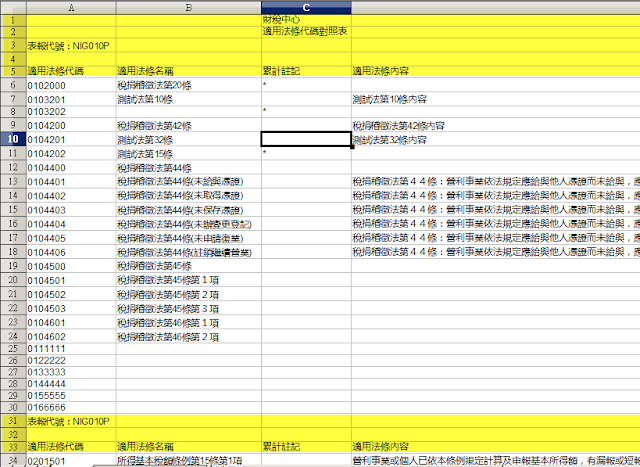
Solution
JasperReports provides IS_IGNORE_PAGINATION.
It is a fill-time parameter, therefore you'll have to set it when filling the report:
See...CSV file does not have pagination after set IS_IGNORE_PAGINATION to TRUE.
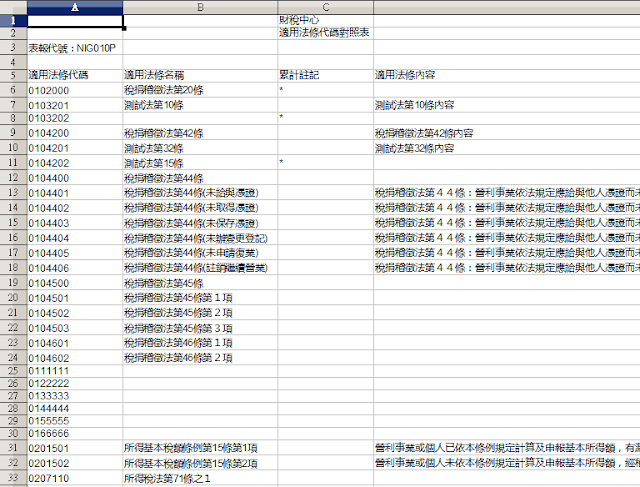
I'm writing a report which needs to be exported to pdf and CSVformat.
when output format is CSV, it should be ignore pagination.
The screenshot as bellowing is wrong, it has pagination in CSVfile:

JasperReports provides IS_IGNORE_PAGINATION.
It is a fill-time parameter, therefore you'll have to set it when filling the report:
params.put(JRParameter.IS_IGNORE_PAGINATION, Boolean.TRUE);
JasperFillManager.fillReport(jasperReport, params, dataSource);
See...CSV file does not have pagination after set IS_IGNORE_PAGINATION to TRUE.

Labels:
JasperReport
2012/02/06
20 Database Design Best Practices
- Use well defined and consistent names for tables and columns (e.g. School, StudentCourse, CourseID ...).
- Use singular for table names (i.e. use StudentCourse instead of StudentCourses). Table represents a collection of entities, there is no need for plural names.
- Don’t use spaces for table names. Otherwise you will have to use ‘{‘, ‘[‘, ‘“’ etc. characters to define tables (i.e. for accesing table Student Course you'll write “Student Course”. StudentCourse is much better).
- Don’t use unnecessary prefixes or suffixes for table names (i.e. use School instead of TblSchool, SchoolTable etc.).
- Keep passwords as encrypted for security. Decrypt them in application when required.
- Use integer id fields for all tables. If id is not required for the time being, it may be required in the future (for association tables, indexing ...).
- Choose columns with the integer data type (or its variants) for indexing. varchar column indexing will cause performance problems.
- Use bit fields for boolean values. Using integer or varchar is unnecessarily storage consuming. Also start those column names with “Is”.
- Provide authentication for database access. Don’t give admin role to each user.
- Avoid “select *” queries until it is really needed. Use "select [required_columns_list]" for better performance.
- Use an ORM (object relational mapping) framework (i.e. hibernate, iBatis ...) if application code is big enough. Performance issues of ORM frameworks can be handled by detailed configuration parameters.
- Partition big and unused/rarely used tables/table parts to different physical storages for better query performance.
- For big, sensitive and mission critic database systems, use disaster recovery and security services like failover clustering, auto backups, replication etc.
- Use constraints (foreign key, check, not null ...) for data integrity. Don’t give whole control to application code.
- Lack of database documentation is evil. Document your database design with ER schemas and instructions. Also write comment lines for your triggers, stored procedures and other scripts.
- Use indexes for frequently used queries on big tables. Analyser tools can be used to determine where indexes will be defined. For queries retrieving a range of rows, clustered indexes are usually better. For point queries, non-clustered indexes are usually better.
- Database server and the web server must be placed in different machines. This will provide more security (attackers can’t access data directly) and server CPU and memory performance will be better because of reduced request number and process usage.
- Image and blob data columns must not be defined in frequently queried tables because of performance issues. These data must be placed in separate tables and their pointer can be used in queried tables.
- Normalization must be used as required, to optimize the performance. Under-normalization will cause excessive repetition of data, over-normalization will cause excessive joins across too many tables. Both of them will get worse performance.
- Spend time for database modeling and design as much as required. Otherwise saved(!) design time will cause (saved(!) design time) * 10/100/1000 maintenance and re-design time.
Read more: http://www.javacodegeeks.com/2012/02/20-database-design-best-practices.html#ixzz1lZ2GPfDI
Labels:
Database
2012/02/03
50 Most Frequently Used UNIX / Linux Commands (With Examples)
1. tar command
2. grep command
3. find command
4. ssh command
5. sed command
6. awk command
7. vim command
8. diff command
9. sort command
10. export command
11. xargs command
12. ls command
13. pwd command
14. cd command
15. gzip command
16. bzip2 command
17. unzip command
18. shutdown command
19. ftp command
20. crontab command
21. service command
22. ps command
23. free command
24. top command
25. df command
26. kill command
27. rm command
28. cp command
29. mv command
30. cat command
31. mount command
32. chmod command
33. chown command
34. passwd command
35. mkdir command
36. ifconfig command
37. uname command
38. whereis command
39. whatis command
40. locate command
41. man command
42. tail command
43. less command
44. su command
45. mysql command
46. yum command
47. rpm command
48. ping command
49. date command
50. wget command
ORA-12704: character set mismatch
Problem
As I execute this SQLstatement
It showed this error message
ORA-12704: 字元設定不符合
12704. 00000 - "character set mismatch"
*Cause: One of the following
- The string operands(other than an nlsparams argument) to an
operator or built-in function do not have the same character
set.
- An nlsparams operand is not in the database character set.
- String data with character set other than the database character
set is passed to a built-in function not expecting it.
- The second argument to CHR() or CSCONVERT() is not CHAR_CS or
NCHAR_CS.
- A string expression in the VALUES clause of an INSERT statement,
or the SET clause of an UPDATE statement, does not have the
same character set as the column into which the value would
be inserted.
- A value provided in a DEFAULT clause when creating a table does
not have the same character set as declared for the column.
- An argument to a PL/SQL function does not conform to the
character set requirements of the corresponding parameter.
*Action:
第 97 行, 資料欄: 133 發生錯誤
Root Cause
The problem result from NIGT007.ADTR_NM is NVARCHAR2.
But the case-when-else statement return empty string in else statement. The empty string is VARCHAR2.
That's why it complains "character set mismatch". What we need to do is do casting.
As I execute this SQLstatement
1: SELECT .....(ignore)
2: CASE
3: WHEN NIGT001.TAX_CD='15'
4: THEN (SELECT NIGT007.ADTR_NM
5: FROM NIGT007
6: WHERE NIGT001.PRST_ADTR_CD = NIGT007.ADTR_STAFF_CD(+) )
7: ELSE ''
8: END AS ADTR_NM
9: FROM NIGT001,NIGT013,NIGT007, ......(ignore)
10: WHERE ......(ignore)
11: ORDER BY .....(ignore)
It showed this error message
ORA-12704: 字元設定不符合
12704. 00000 - "character set mismatch"
*Cause: One of the following
- The string operands(other than an nlsparams argument) to an
operator or built-in function do not have the same character
set.
- An nlsparams operand is not in the database character set.
- String data with character set other than the database character
set is passed to a built-in function not expecting it.
- The second argument to CHR() or CSCONVERT() is not CHAR_CS or
NCHAR_CS.
- A string expression in the VALUES clause of an INSERT statement,
or the SET clause of an UPDATE statement, does not have the
same character set as the column into which the value would
be inserted.
- A value provided in a DEFAULT clause when creating a table does
not have the same character set as declared for the column.
- An argument to a PL/SQL function does not conform to the
character set requirements of the corresponding parameter.
*Action:
第 97 行, 資料欄: 133 發生錯誤
Root Cause
The problem result from NIGT007.ADTR_NM is NVARCHAR2.
But the case-when-else statement return empty string in else statement. The empty string is VARCHAR2.
That's why it complains "character set mismatch". What we need to do is do casting.
1: SELECT .....(ignore)
2: CASE
3: WHEN NIGT001.TAX_CD='15'
4: THEN (SELECT NIGT007.ADTR_NM
5: FROM NIGT007
6: WHERE NIGT001.PRST_ADTR_CD = NIGT007.ADTR_STAFF_CD(+) )
7: ELSE CAST('' as NVARCHAR2(10)) --do cast here
8: END AS ADTR_NM
9: FROM NIGT001,NIGT013,NIGT007,, ......(ignore)
10: WHERE ......(ignore)
11: ORDER BY .....(ignore)
Labels:
Oracle
Subscribe to:
Comments (Atom)










